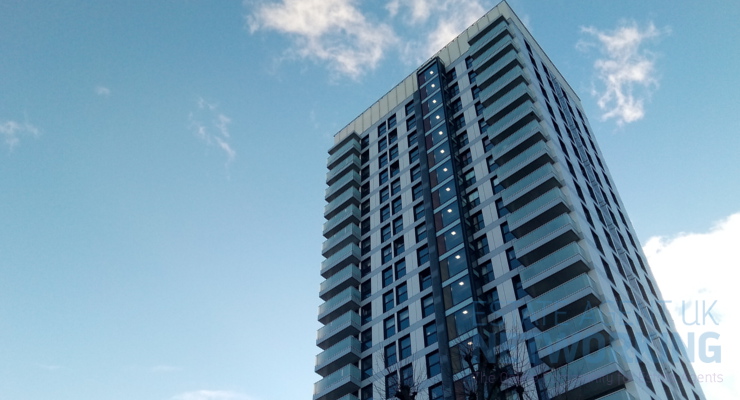Is Your Real Estate Website Built to Sell? 6 Signs It’s Time for a Redesign
In the current real estate market, initial impressions are formed online. Long before they enter your office, clients scroll, examine, and glance through listings. The important issue is whether your real estate website is truly assisting in the sale of your property or if it is quietly diverting prospects to other sources.
A website that appeared to be well-maintained a few years ago may now appear to be a digital relic. User expectations increase, design standards shift, and technology evolves. It is not merely a matter of appearing outdated if your website is not up to date; it is also a matter of losing business. And for property professionals who have been in the industry for a decade or more, it is time to be brutally honest: Is your website designed to convert or is it merely gathering dust?
1. Outdated Design That Undermines Credibility and Performance
Real estate veterans frequently take pride in their reputation and word of mouth, and for good reason. However, in a world where 97% of home purchasers perform online searches, your website works as a combination of your business card, shopfront, and elevator sales presentation.
If your website’s design has not been updated in the past five years, it is probable that it is underperforming. The absence of concern in 2012 is evident in the outdated layouts, small images, non-responsive designs, and congested pages. Clients are no longer satisfied with merely attractive photographs; they anticipate clear, functional layouts, quick launching, seamless navigation, and mobile compatibility. Additionally, it is essential that you remain ahead of your competitors, as they are already implementing this strategy.
Consider whether your website accurately represents the outstanding service that you offer. Or does it suggest that you are not totally familiar with the digital standards of this modern day? A contemporary, user-focused design will not only impress, but also convert.
2. You’re Managing Everything In-House
There is a difference between being hands-on and being overextended. You are harming your brand by attempting to “update the site when you get a chance” while simultaneously managing team management, negotiations, and listings.
Professional results are the result of professional hands. This is the point at which an experienced web development agency becomes indispensable. Their expertise lies in the development of real estate websites that are not only visually appealing, but also strategic. These websites are equipped with robust frameworks, optimized search features, simple CMS updates, and integrations that actually simplify your workflow.
A reputable agency will not merely “develop a website.” They develop systems that are compatible with your team, allow for scalable growth, and support SEO. For instance, Ginger IT Solutions emphasizes functionality that is tailored to the real estate sector, including intuitive dashboards that are user-friendly for non-tech employees and custom integrations.
3. Your Site Isn’t Bringing in Leads
Traffic is one thing, conversions are another. If your analytics indicate that there are visitors, but your inbox remains silent, there is a disconnect. It is possible that your calls to action are hidden. It is possible that your forms are not mobile-friendly, complicated, or falling apart. Users may be uncertain about their next steps. Worse yet, they may abandon your site entirely and move on to a competitor that offers a smoother experience. In a digital-first landscape, that’s a risk no agency should be taking lightly.
Modern real estate websites are intended to facilitate the transition from perusing to booking. The inclusion of lead magnets, such as valuation tools or market guides, and the intelligent use of CTAs are not merely “nice extras”; they are expected. Something must be adjusted if your website is not functioning as a 24/7 sales assistant.
4. Poor SEO Performance Is Costing You Opportunities
In today’s digital environment, failing to appear in search engine results is the equivalent of maintaining a premium High Street office with the blinds drawn—virtually invisible to potential clients. If your website isn’t ranking for local keywords or appearing in relevant property-related searches, your competitors are capturing the audience that should be yours.
Search engine optimization in 2025 is no longer about excessive keyword placement. It relies on solid technical infrastructure, fast loading speeds, clean code, structured data, and meaningful, well-crafted content. A website redesign presents an ideal opportunity to lay these essential SEO foundations properly.
Overlooking this aspect not only diminishes your online visibility but also undermines the long-term performance of your digital marketing efforts. Investing in SEO during a redesign ensures that your site isn’t just aesthetically modern, but also technically sound and search-ready. A visually appealing interface is important, but without a strong foundation, it won’t deliver sustainable results.
5. Poor Mobile Experience Drives Users Away Permanently
If your website doesn’t load properly on mobile devices, you’re losing important visitors. With smartphones and tablets accounting for more than 70% of property searches, a site that is slow, unreliable, or poorly designed for smaller displays will frustrate customers and drive them away—often permanently.
Mobile customers expect a smooth, quick, and easy browsing experience. A mobile-first strategy should be prioritized while redesigning a website, ensuring that content, functionality, and navigation are especially optimized for mobile engagements. This includes elements like swipeable picture galleries, fixed-position contact buttons, and simple, easy-to-use forms that promote action rather than abandonment.
An outdated mobile experience not only affects consumer satisfaction but also has a negative influence on your site’s search rankings. As mobile accessibility becomes an increasingly important SEO criteria, a responsive and performance-optimized site is no longer an option—it is required to remain competitive in the real estate sector.
6. Your Website No Longer Reflects Your Evolving Brand
Businesses expand, offerings diversify, and target customers evolve throughout time. If your website continues to communicate with the same audience that it did a decade ago, it is most certainly out of sync with your current market position. Your online presence should correctly reflect who your company is today—its voice, beliefs, offers, and the type of clientele it wants to attract.
Outdated branding, contradictory messages, and images that no longer reflect your identity can cause confusion, erode credibility, and ultimately undermine client confidence. A website redesign allows you to intentionally realign every element—from tone of voice to visual identity—to create a cohesive, professional, and relevant brand experience.
A website that fails to adapt with your company risks sending opposing messages and losing potential customers. In today’s competitive real estate market, clarity and consistency across digital touchpoints are critical for establishing authority and developing long-term connections. A makeover is more than just a visual improvement; it’s an important step in keeping your brand message sharp and effective.
Final Thoughts
The real estate industry is highly competitive, and today’s buyers and sellers expect digital experiences that are fast, intuitive, and visually engaging. If your website is outdated, difficult to navigate, or no longer aligned with your current business needs, a comprehensive and efficient redesign is not a luxury—it’s a necessity.
Your website should serve as a high-performing extension of your team, consistently generating leads, showcasing properties effectively, and reinforcing your brand’s professionalism. If it is falling short in any of these areas, it is time to consider a strategic upgrade.









